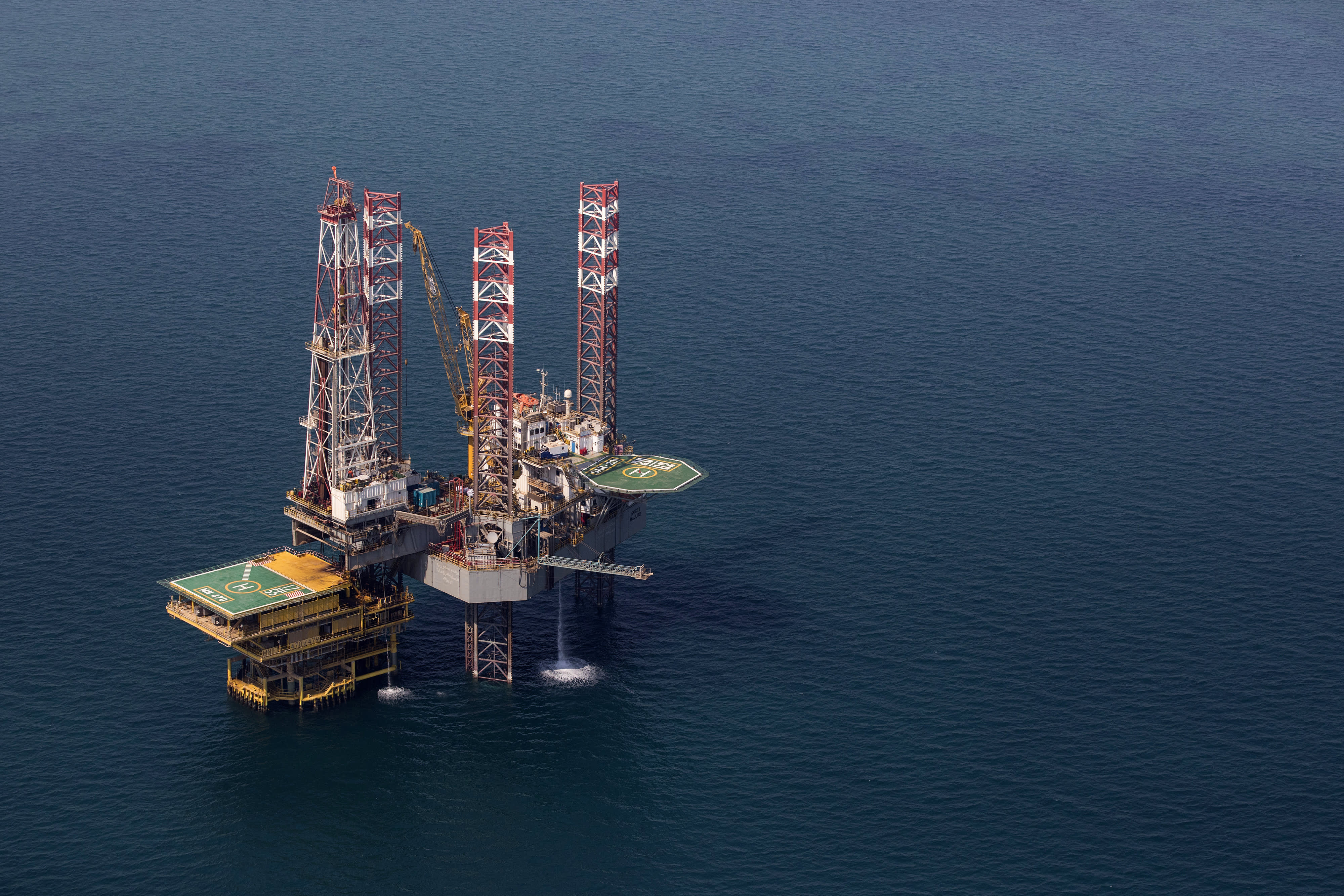An offshore drilling platform stands in shallow waters at the Manifa offshore oilfield, operated by Saudi Aramco, in Manifa, Saudi Arabia.
Simon Dawson | Bloomberg | Getty Images
Oil giant Saudi Aramco reported a 50% fall in net income for the first half of its financial year, reflecting a devastating year for oil markets and the global economy at large as the world continues to battle the coronavirus pandemic.
In a release published Sunday, the company said net income plunged to $23.2 billion in the first six months of the year, down by half from $46.9 billion over the same period in 2019.
Saudi Arabia’s majority state-owned oil company and the world’s largest crude producer also maintained its second-quarter dividend of $18.75 billion, saying it will be paid in the third quarter. Its first-quarter dividend of the same amount was paid in the second quarter.
Total free cash flow at the company came in at $21.1 billion for the first half, down from $38 billion the year before.
The financial results for the second quarter reflect the biggest shock to global energy markets in decades.
“Strong headwinds from reduced demand and lower oil prices are reflected in our second quarter results,” Aramco President and CEO Amin Nasser said in the release.
It was the first earnings press conference Saudi Aramco executives have held since the company went public in December, suggesting a maturation in efforts to build transparency at one of the world’s biggest businesses.
Aramco said the result was hit by lower crude oil prices and declining refining and chemicals margins, owing to a historic halt in global economic activity and oil and product demand due to the coronavirus.
“The worst is likely behind us,” Nasser told the earnings call. “We remain fairly positive about the long term demand for oil.” Prices flipped into negative territory in April, and while the market has stabilized, Brent crude oil prices are still down more than 30 percent this year.
The latest earnings numbers come just a week after Aramco ceded its title as the world’s largest listed company by market capitalization to Apple. Shares were largely unmoved on the news, trading up by 0.29% Sunday morning local time.
Dividend payout intact, but capital expenditure on watch
Despite continued global economic disruption and challenges facing the energy sector, Aramco declared a dividend of $18.75 billion for the second quarter, compared to $13.4 billion for the second quarter of 2019.
“This demonstrates Aramco’s agility, strength and resilience across market cycles,” Nasser added, defying analysts by maintaining the payout amid renewed suggestions that it could be scaled back. Rivals BP and Royal Dutch Shell have already slashed dividends amid the pandemic.
“Our intention is to pay $75 billion dollars, subject to board approval and depending on market conditions,” Nasser said. “We have a strong balance sheet and we have a lot of flexible capital on our hands,” he added.
Capital expenditure was $6.2 billion in the second quarter and $13.6 billion for the first half of 2020. That figure for last year’s first half was $14.5 billion.
Aramco said it expects capital expenditure to be at the lower end of the $25 billion to $30 billion range for 2020, compared to $32.7 billion for 2019.
Big oil is getting a big makeover
Big oil is combating historic market and operational challenges. The coronavirus has caused the biggest shock to global energy markets in decades, but executives at Aramco are optimistic on the recovery trajectory in the third quarter and beyond.
“We are seeing a partial recovery in the energy market as countries around the world take steps to ease restrictions and reboot their economies,” Nasser added, but warned that the fall in energy demand sparked by the coronavirus would weigh on its full year earnings.
Some U.S and European firms have been forced to dramatically cut the value of oil assets and rethink price assumptions to combat a troubled global economy and shifting investor expectations. Smaller firms within the US shale industry have gone bust, weighed down by crippling debts and unable to stay viable in the current price environment.
Despite the concerns, analysts said Aramco was better prepared to weather market volatility, owing to its size and scale, its low cost of production and solid free cash flow generation in a weak oil price environment.
The result also comes after Aramco subsidiary, Saudi Basic Industries Corp (SABIC), reported a third straight quarterly loss last Thursday.
